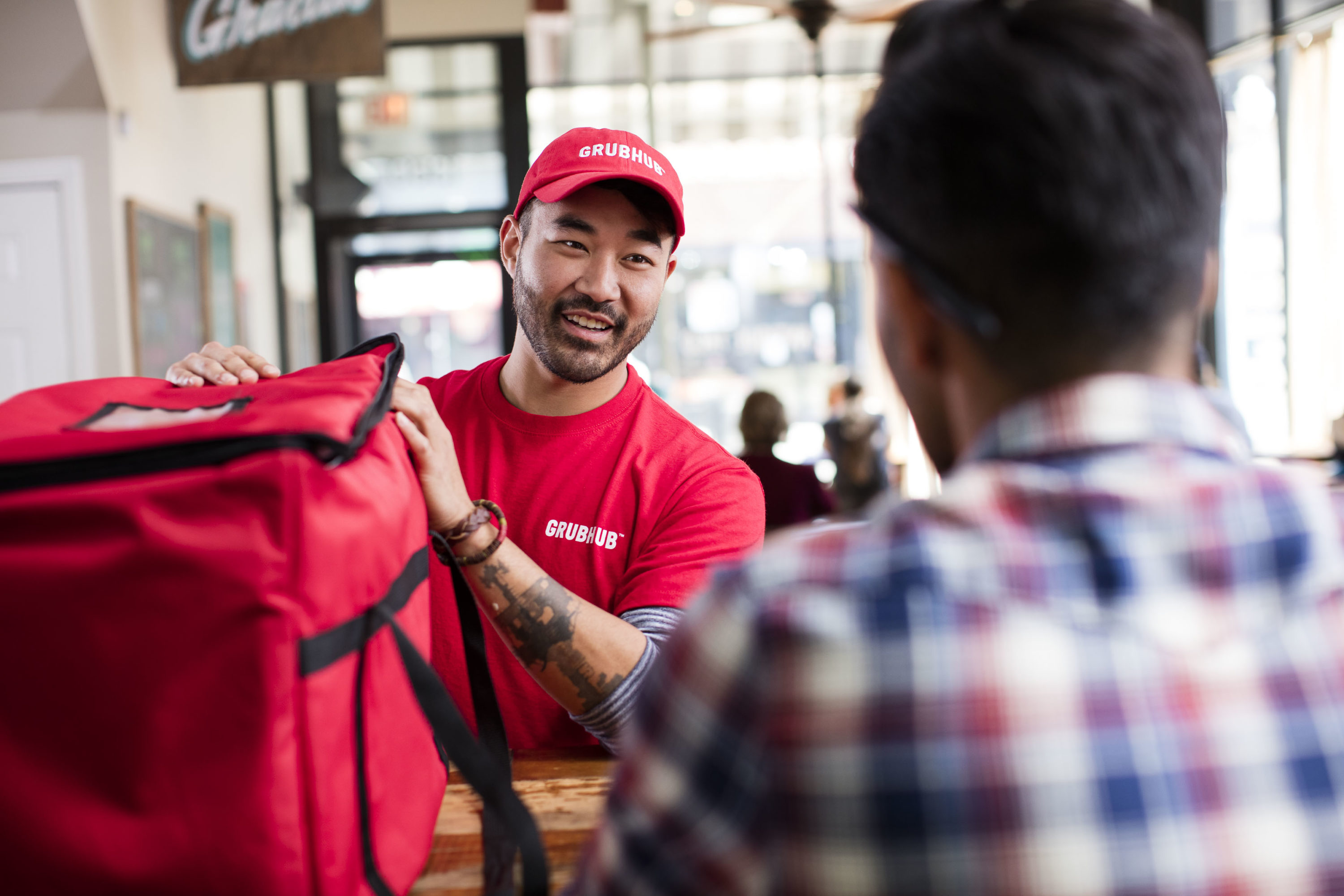The first Skift Restaurants Forum will be held on Monday, September 24 in New York City. Join us, our stellar lineup of speakers, and 250+ industry professionals to discuss the future of the industry.
Perhaps one of the biggest stories in the restaurant industry right now is the popularity of online ordering and delivery services that aim to deliver meals from restaurant to consumer. Sales in the sector have been consistently growing by 40 percent year-over-year in the U.S. since 2014, according to Earnest Research, a data analytics company. But that’s just part of the story.
Chicago-based Grubhub made headlines recently with its $390 million purchase of restaurant technology company LevelUp, known to consumers for its work in the restaurant loyalty space. According to Chia (and Grubhub CEO Matt Maloney in the company’s most recent earnings call), the acquisition made sense for several reasons, including LevelUp’s ability to integrate into restaurant point of sale systems, something that’s quickly becoming a point of differentiation between competing online ordering and delivery companies.
In fact, Maloney said on the call, “We started talking to LevelUp earlier this year in the context of a partnership because of their deal with restaurant relationships and their ability to integrate to the point of sale. And then as we continued to work through what a partnership would look like, it became very obvious that strategically, we were both aligned, and it made most sense to actually go ahead and acquire them.”
At Skift Restaurants Forum on September 24, Grubhub chief operating officer Stan Chia will discuss the growing business, its challenges, and what’s next for the company as it looks beyond its role as a third-party delivery provider to becoming a true tech partner to restaurants. Here, a top-level view of the business, its growth, its challenges, and a little bit of what to expect from his appearance onstage.
Skift Table: A big trend we’ve been noticing, generally, is the move out of cities and into suburban and rural areas. How’s it going?
Stan Chia: For us it’s been an exciting year. We’ve been fortunate to have great restaurant partners to help us grow the business. We work with 85,000 restaurants and 125 of the largest national brands. We’ve launched over 70 markets already this year. Because of our coverage in those major metros, you’ll see that 70 is more of the smaller, suburban-type markets and we’re really on track to more than double our delivery footprint this year with a lot of that growth coming from the smaller towns, the suburban towns. That’s just a testament to the wonderful partnership with have with restaurants, we can enable them to be successful on the platform whether you are in the heart of Manhattan or you’re in Charleston, South Carolina.
Skift Table: It seems like we’ve moved past the exploratory stage for restaurants and technology, and operators are implementing and embracing technology that helps them run their businesses. Do you see restaurants as less reluctant toward new tech than they’ve been in the past?
Chia: Yes. I think the restaurant industry is almost at the same spot that retail was about 10 years ago, where the realization that diners, guests, or consumers, whichever term you have for them, are starting to making that inevitable movement from offline to online. Restaurants are really starting to embrace the channel and figuring out how to build that channel out for guests in a way such that they continue to have healthy businesses, but also manage the guest experience in a way that they are proud of. Yes I do think that restaurants are getting there, and that this is absolutely the time where they’re starting to build out that channel — and what it means specifically for them at the restaurant brand level to be able to embrace it the right way.
Skift Table: What’s the biggest challenge facing your business today?
Chia: We are growing at breakneck place. We continue to grow, we’re growing in places like Charleston, Manhattan, Kansas City, Atlanta, Baton Rouge, all cities, all sizes. We are so customer obsessed and having a marketplace with three different customers, all equally important — the diner or the guest, the restaurant, and the couriers that power the portion of the business where we deliver. Our responsibility is to make sure that while we grow into that speed into markets that behave very differently, we need to make sure that we still deliver a fantastic experience to all of them. And that’s still our greatest opportunity but also our greatest challenge: to make sure we balance that growth with some experience for all three of them regardless of market, type, segment, demographic, population. We still want to have a great experience across the board.
Grubhub — like its competitors — isn't just a delivery service. New technology and smart acquisitions are changing the role of online ordering and delivery in our daily lives. / Grubhub